Adobe Audition Different Track Volumes for Different Parts of Song
Here is a free beginner's guide on how to make beats and how to make music in general.
This guide is for new music producers, but even if you are a pro, you will still find helpful links on how to make better music.
Related: 30 Best Websites to Make Beats Online For Free
1. Introduction to How to Make Beats
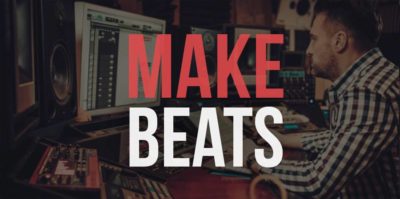
There are many aspects to making music. From learning software to making the beat, to mixing the audio, to exporting audio for music artists.
Learning to make your own beats can be an overwhelming process, but this guide covers a lot of the basics to make it easier for you to learn.
So let's get started!
2. Music Equipment Basics
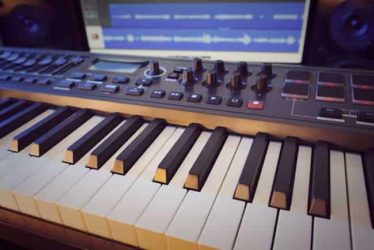
Your music equipment will be the foundation of your music-making process.
In the beginning, we all want to be like the big music producers we see online with the room full of music equipment, but you don't need all that when you are getting started, and here is why:
- Music Equipment is Expensive
Limit your spending to the basic equipment at first, and then buy more advanced gear when you are earning money. - Time & Learning
The more equipment you buy, the more equipment you have to learn, and less time is spent on learning to make better music.
Remember this…
It's not about the music equipment or software you are using, but about the person using the equipment.
Your ear for music, skills, and talent matters more than the equipment you are using.
Dr. Dre's music equipment didn't make him the big music producer he is today. His ear for music and talent did, so don't think you need a big studio to make good music.
Music Equipment Essentials
Here are the very basics of what you need to make music.
2.1 Laptop or Desktop Computer
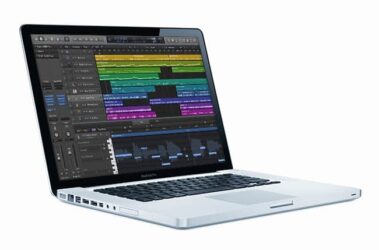
A computer is a must-have to use any music software programs.
Microsoft Windows computers are more popular for creating music because there is more software available for free.
But Mac computers have continued to grow in popularity with popular music programs like Apple Logic and Garageband.
Most Popular Laptops
Bestseller No. 1 
Bestseller No. 2 
Bestseller No. 3 
Last update on 2021-12-19 / Affiliate Links
2.2 Music Software

Music software is essential for recording and making music.
Below we will cover the top 3 most popular music programs.
- Best Music Production Software
- Free Music Software
- Free Audio Editor Software
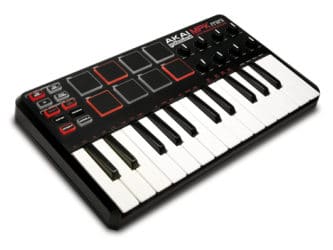
2.3 MIDI Keyboard
You can connect a MIDI keyboard to your computer to play out chords, melodies, and your musical ideas.
Making music is much easier with a keyboard because you can just play out your ideas instead of clicking musical notes with a computer mouse.
Top Selling MIDI Keyboards
Bestseller No. 1 
Bestseller No. 2 
Bestseller No. 3 
Last update on 2021-12-19 / Affiliate Links
2.4 Studio Headphones
Headphones will let you hear all the different elements when making music.
Top Selling Headphones
Sale Bestseller No. 1 
Sale Bestseller No. 2 
Bestseller No. 3 
Last update on 2021-12-14 / Affiliate Links
2.5 Studio Monitors
Studio monitors are great for listening to your beats. Popular Speakers
Top Selling Studio Monitors
Bestseller No. 1 
Bestseller No. 2 
Sale Bestseller No. 3 
Last update on 2021-12-14 / Affiliate Links
That is the basic equipment you need to make beats.
If you have a limited budget, you can consider buying used music equipment from sites like Craigslist or Offerup.
Related: 15 Best Music Studio Desks For Musicians
3. Music Software Basics
There are tons of music software programs available, but which one is the best for you? Watch the video below.
Music Software Overview
The Top 3 Beat Making Software Programs
#1. Image Line FL Studio
FL Studio (formerly known as Fruity Loops ) is a digital audio workstation developed by Image-Line.
FL Studio features a graphical user interface based on a pattern-based music sequencer.
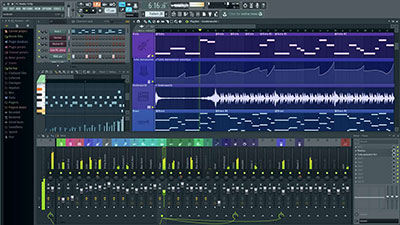
Why FL Studio is Popular:
- It's easy to learn.
- Cheaper than many other programs.
- Supports VST plugins, samples, and other software programs.
- Making patterns and arrangements is easy.
- Offers tons of built-in instruments.
Website | Buy It
FL Studio Links:
- FL Studio Beginners Guide
- 20 Producers Who Use FL Studio
#2. Propellerhead Reason
Propellerhead Reason is a digital audio workstation for creating and editing music and audio developed by Propellerhead Software.
It emulates a rack of hardware synthesizers, samplers, signal processors, sequencers, and mixers.
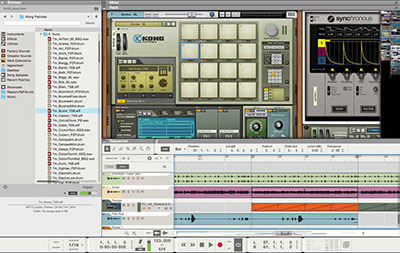
Why Reason is popular:
- Includes tons of instruments: Synthesizers, Samplers, Drum Machines, Effects.
- Cool interface, racks, and mixer.
- ReWire allows you to use Reason in other popular music software programs.
- Add additional sounds called Refills.
Website | Buy It
Reason Links
- Reason Beginners Guide
- Your First 10 Minutes in Reason

#3. Apple Logic
Logic Pro is a digital audio workstation and Musical Instrument Digital Interface MIDI sequencer software application for the Mac OS X platform.
Why Logic popular:
- Nice-looking interface.
- The virtual instruments and session drummer work well and sound incredible.
- Mixing, effects, and automation
- Enhanced Piano Roll Editor.
Website
You should research the programs above and see what works best for your needs.
What is the most popular music software?
FL Studio was voted the most popular music software in the poll we ran. So you may want to look into that program if you are a beginner.
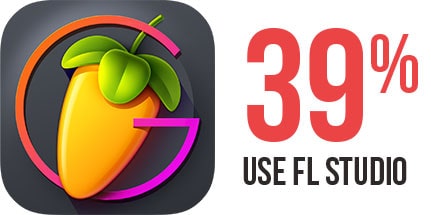
Other Popular Music Programs are:
- Ableton Live
- Steinberg Cubase
- Pro Tools
- Reaper
- Garageband
- Sony Acid
4. VST Instrument Plugins & Effects
Another software you will need to get familiar with is VST Instruments and VST plugins. "VST" Stands for Virtual Studio Technology and these are plugins or add-ons that you can use in different music programs for instrument sounds or effects.
A VST Instrument can be a piano, synthesizer, organ, or guitar.
A VST Effect can be autotune, delay, chorus, or reverb.
VST plugins can be helpful add-ons for any music program you are using to give you additional sounds and effects.
Most DAWS offer great stock plugins and sometimes that's all you will need. However, if you want to dive deeper in this world, check out some of our most popular free VST plugin articles:
- Free VST Plugins
- Free String VST Plugins
- Free Synth VST Plugins
- Free VST Plugins Websites
- Free Guitar VST Plugins
Common Software Related Questions:
What Is MIDI?
MIDI stands for Musical Instrument Digital Interface. MIDI allows electronic music instruments, computers, and other devices to connect and communicate with one another.
5. How to Make Your Own Beats
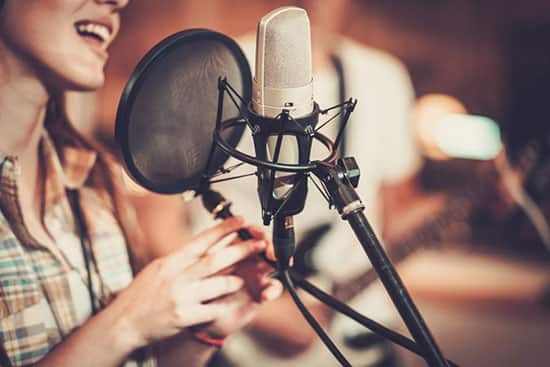
Making beats may actually be easier than you think if you have an ear for music. Beats are essentially loops that are rearranged and repeated.
Beats can be simple, or beats can be complex.
It's all about giving the music artist a good foundation to get their creative juices going to make a great song.
Basic Beat Elements
1. Drums – Songs usually consist of kick drums, a snare or clap, hi-hats or shakers, cymbals, and other drum sounds.
2. Melodies – The melodies are the instruments that are played over the drums. The instrument can be a piano, synth, bass, strings, live instruments, and more.
3. Samples – A lot of Hip Hop beats feature samples that have been chopped and reorganized to fit a drum pattern.
How to Make a Beat
Here is an example of how to make a beat. Even though the beat below is made in FL Studio the same process can be applied to other music software programs and hardware. Lay out your drums, add instruments and arrange your beat into a full song.
How to Make a Beat in Reason
Here is an example of how to make a beat. Even though the beat below is made in Propellerhead Reason, the same thought process can be applied to other music programs and hardware. Lay out your drums, add instruments and arrange your beat into a full song.
Please Note: The beat below isn't great. Just try to learn from the process.
How to Create Better Intros, Choruses, and Verses
Here is a process of what I like to do to create different sounding parts of a beat. The tutorial is done in Reason but it can be done in other music software as well.
Detailed Beat Making Tutorials
The examples below are made with different music equipment and software, but the process is very much the same for all the different music genres.
- How to Make Hip Hop Beats
- How to Make R&B Beats
- How to Make Sampled Beats
- How to Make Pop Beats
- How to Make Trap Beats
- How to Make Dubstep Music
- How to Make Electronic Music
- How to Make Lo-Fi Beats
Beat Making Inspiration
- 10 Year Old Girl on the MPC
- Hit-Boy Makes Beyonce's "Bow Down" in FL Studio
- J. Cole Explains Making "Power Trip"
- Jaisu Beat Tape – Sampled Beats on the MPC
- Gnus Makes a Beat in FL Studio
- Jon Bellion Making of Pre-Occupied
Beat Making Tips
Here is a collection of beat-making tips to use when making your own beats.
- Focus on mastering the one program you choose to use. Don't try to learn everything at once.
- Study your favorite music producers. Try to recreate your favorite beats to understand how beats are made.
- Collaborate with others.
- Beats should usually stay under 3 1/2 minutes.
- Import MIDI. If you don't know how to play the keyboard well, try importing MIDI files and edit the notes in your music software.
- When you need inspiration look at beat-making videos.
Music Tempo Guide
Here are a few of the suggested tempos for different music genres.
- Hip Hop: 76 to 95 BPM
- R&B: 72 to 110 BPM
- Dance: 112 to 145 BPM
- Dubstep: 138 to 145 BPM
- Rock: 72 to 95 BPM
- Trap: 130 to 140 BPM
- Techno: 220 to 125 BPM
Beat Making Helpful Links
- 32 Music Production Tips by 9th Wonder, Boi-1da, Just Blaze, Timbaland
- Music Production Poll Results ( Infographic )
- 10 Tips to Make Your Own Beats
- 10 Newbie Commandments for Music Producers
Other Music Topics
- How to Make a Sampled Beat in FL Studio
- Piano Tips for Beat Makers
- Bassline Tips for Sampled Beats Part 1 & Part 2
- How to Create Acapellas
- Remix Songs
Free Drum Kits & Music Samples
Below we have put together some of our best free resources for you to download and add to your music making collection.
Free Drum Samples & Drum Kits
- 1,000 Free Drum Break Samples & Loops
- 18,000 Free Loops & Free Drum Loops
- 2,000 Free Drum Samples – Kicks, Snares, Shakers
- 15 Free Hip Hop Drum Kits & Sample Packs
- 10 Free Boom Bap Drum Kits
- 25 Drum Sample Packs: 10,000 Free Drum Samples
Popular Free Sample Packs
- 5 Free EDM Sample Packs
- 15 Free Trap Music Sample Packs – Trap Drums & Loops
- 30 Free Sample Packs – Kanye West, DJ Mustard, Loops
6. Song Arrangements
Once you have a good understanding of putting together a beat, next you need to understand song structures. Different music genres are laid out differently. Song tempo and length may vary.
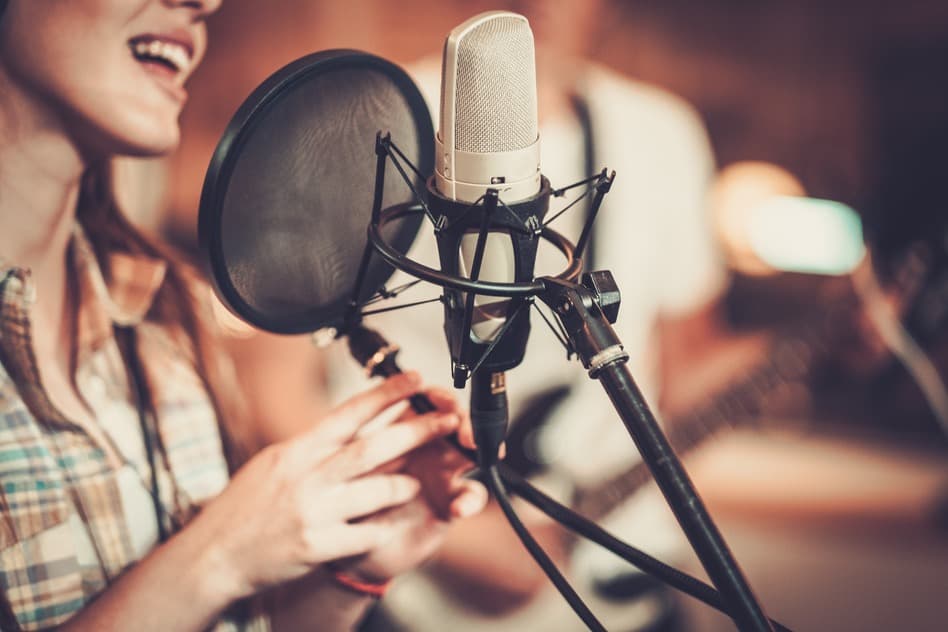
Common Song Sections
Intro – Usually has fewer elements and builds up to the verse or hook.
Verse – Usually a simpler version of the beat, allowing room for vocals. Usually 16 bars.
Hook – Usually has the most elements in a song and repeats a chorus. Usually 8 bars.
Bridge – This usually appears before the last verse. Usually appears in R&B and Pop songs. Usually 8 bars.
Outro – Usually fades the song out.
Solo
This is a piece or a section of a piece played or sung by a single performer.
Common Song Structures
Intro – Verse – Hook – Verse – Hook – Verse – Hook – Outro
or
Intro – Hook– Verse – Hook – Verse – Hook – Verse – Hook – Outro
R&B Songs
Intro – Verse – Hook – Verse – Hook – Bridge – Hook – Hook – Outro
Rock Songs
Intro – Verse – Hook – Verse – Hook – Solo – Hook – Hook – Outro
The examples above are just examples. You should study your favorite songs to see how they are structured. You can also search Genius.com for song lyrics, and see the order of song lyrics.
Helpful Links on Song Structure
- The Formula Behind Every Perfect Pop Song
- How to Produce Music – Form & Arrangement
- How to Rap: Song Structure ( Understanding Bars )
- Why We Love Repetition
- Beats, Bars, & Phrases ( How to Count Music )
7. Music Theory
Music theory is without a doubt the subject most feared by music producers and artists. It may be complicated to get a grip on it a first, but with millions of tutorials available on the internet, you'll learn it in no time.
While many music producers and beatmakers underestimate the importance of music theory, you must take some time to learn the basic stuff such as scales, harmony, and circle of fifths.
Check out these videos we've gathered on basic music theory:
A Beginner's Guide to Music Theory
Music Theory Videos
- Music Theory For Beat Makers – Understanding Scales
- How Chords Work – Music Theory Crash Course
- How Intervals Work – Music Theory Crash Course
8. Mixing Music
Once you have a good beat, you want to make sure the audio is mixed well to sound good on different devices.
Audio mixing is the process of taking all the individual tracks and instruments, adjusting the audio levels, panning, adding effects, and more.
Mixing the audio will help to make sure your beat sounds good on your computer, car, home stereo, and more.
Basic Mixing Theory
Additional Tutorials
- How To Mix Hip Hop Beats – This video is done in FL Studio, but the same rules apply to other music production software.
- 10 Audio Mixing Tips
10 Audio Mixing Tips
- Start with high-quality sounds.
- Use studio monitors.
- Use Multiple Sound References – Test out your audio mix on your computer, in your car, with headphones, with monitors, etc.
- Gain Staging – Get your levels right, avoid audio clipping.
- Get good with EQ.
- Give your ears a break. Take breaks from mixing and come back with a fresh pair of ears.
- Rely on your ears. Don't focus on what you see on the screen.
- Use panning.
- Mix at low levels at first, then turn the volume up.
- Listen to top quality mixes as a reference of what you should strive for.
Tutorials on Audio Mixing
- How to mix beats in FL Studio or Reason
- Compression 101: How to Use a Compressor
- Mastering 101: How to Master a Song
- Mixing a Hip Hop Song ( Basic Tips )
- 5 Mistakes Every Producer Makes When Mixing
Basic Audio Mixing Terms
- Clipping – Clipping is a form of audio distortion that happens when audio is too loud.
- Equalization ( a.k.a EQ ) is the process of adjusting the frequency of the audio or instrument.
- Panning is the process of adjusting the audio to the left speaker, right speaker, or center.
- Effects – Effects is the process of adding reverbs, delays, echoes, and more to audio tracks.
- Compression – Compressors are devices / plugins used to reduce dynamic range, even out performances and tame transients.
- Volume Adjustment and Automation – Before going any further, adjust your volumes to a point where the track sounds even and balanced. Often, some instruments such as vocals will need volume automation.
- Limiters – Limiters are devices / plugins that won't let the audio pass through a said dB. Often used to raise the perceived volume of a track or song without clipping it.
- Delay / Echo – As the name implies, delays and echos create a certain number of repetitions of the audio track. Often used in mixing to create space without losing clarity.
- Reverb – Reverbs are used to create the illusion of the instrument being played in a certain room or space.
- Stereo Width Enhancer – Stereo Width Enhancer devices / plugins are used to create a more open and wider stereo sound. A great option to use if your track is sounding too mono or too centered.
- Saturation – Saturation is the process of creating subtle harmonic distortion. Often used to mimic the warmness vintage gear. Great to make the bass more audible, the drums more characteristic and the vocals more powerful.
9. Exporting & Tracking Out Beats
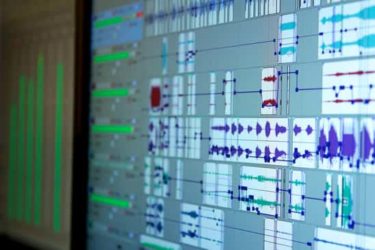
Exporting is the process of saving your beat to your computer. All music programs will have an export option.
The most popular file formats are WAV and Mp3.
- WAV – This file format is high quality and usually uncompressed. The file size is much larger compared to mp3.
- MP3 – This file format is compressed, so the file size is much smaller and the quality is lower. This format is used more for streaming online.
Tracking Out Beats
Tracking out beats, also known as "Bouncing Audio," is the process of exporting all the individual instruments and sounds into separate audio files so they can be mixed in another audio program.
Sometimes music artists request beats to be tracked out so they can make adjustments to the beat to fit with their vocals. The artist may add or remove elements from the beat.
How to Track Out Beats In FL Studio
The tutorial below is done in FL Studio, but the same process can pretty much be done in other music programs. Once all the individual instruments are exported, they would be imported into an audio program.

Helpful Links
- How to Track Out Beats
- Tracking Out Beats in Reason
- Tips for Mastering for SoundCloud
10. Music Glossary Terms
Here is a collection of common music production glossary terms and definitions for music newbies.
Music Terms
- Digital Audio Workstation ( DAW ) – This is a computer software program for recording, editing, and producing audio files such as songs, beats, and sound effects.
- Musical Instrument Digital Interface ( MIDI ) – MIDI allows electronic music instruments, computers, and other devices to connect and communicate with one another.
- Virtual Studio Technology ( VST )
This is a software interface that can add instruments ( Examples: Synth, Piano, Bass, etc. ) and effect plugins to music programs. - WAVeform ( WAV ) – WAV is an audio file format.
- Synthesizer ( Synth ) – A synthesizer is an electronic musical instrument that generates electric signals that are converted to sound through instrument amplifiers.
- Metronome – A metronome is a device that produces regular ticks – settable in beats per minute. These ticks represent a fixed, regular pulse.
- 16 Bars -16 Bars is a reference to how long a usual rap verse is. Rap Song Structure
- Tempo is the speed or pace of the music. The same info for Beats Per Minute ( BPM ).
- Chords – A chord is a harmonic set of three or more notes played at once. Video
- Music Theory – The study of music elements, including sound and pitch, rhythm, melody, harmony, and notation.
- Drum Machine – A drum machine is an electronic musical instrument designed to imitate the sound of drums, cymbals, other percussion instruments, and often basslines.
Audio Mixing Terms
- Clipping -Clipping is a form of audio distortion that happens when audio is too loud.
- Equalization ( EQ ) – EQ is the process of adjusting the frequency of the audio or instrument.
- Panning – Panning is the process of adjusting the audio to the left speaker, right speaker, or center.
- Effects – Effects is the process of adding reverbs, delays, echoes, and more to audio tracks.
General Music Terms
- Mastering Audio is the process merging all mixed audio and preparing it for distribution.
- Bounce or Bouncing – Bouncing audio is the process of exporting individual audio tracks in your audio mix.
11. Advanced Video Tutorials
Here are a couple of videos with more details on how to make music.
How to Start Producing Music
Additional Videos
- Make Beats without Knowing Music Theory
- How to Get Started at Making Music
Beat Making Articles
- 10 "Newbie" Commandments
- Music Production Poll Results
- Why We Love Repetition in Music
- 7 Things Every Music Producer Should Have
- 20 Popular Music Producers Who Use FL Studio
- Should You Follow Music Trends?
- 10 Tips to Make Your Own Beats
- 5 Reasons to Work for Free ( Newbie Tips )
- 10 Home Music Production Tips
- Should You Stop Making Music?
- How to Be a Music Producer
9 Things They Don't Tell Music Producers
- Your first attempts at making music won't be great, and that's the way it should be.
- Your habits count more than your knowledge.
- Everybody steals. Everybody!
- Most of the tools you think you need, you don't need.
- Nobody creates in a constant peak state.
- Most of what you think you need to know, doesn't matter.
- You don't have to be miserable to make good music.
- Musicianship is optional.
- Time is the only difference from you & those who are now successful.
View Article
Become Efficient At Creating Music
While it may seem like an avoidable topic, objectivity, and proficiency when producing music is very important.
If you don't work these skills, you risk ending up doing much less than you are capable of and taking much more time than needed in learning music production.
Check out some tips on how to apply objectivity and proficience into your music producers' routine:
- Try producing music everyday. Don't treat it solely as a hobby.
- Set a routine and stick to it. For instance, you can start by picking 2 hours of your day to produce music and 1 hour for learning new techniques related to music production.
- Use focus timers such as an online stopwatch to help you track your time and maintain you focus.
- Turn off unnecessary distractions such as phone notifications and social media while producing music.
- Set goals and deadlines for yourself.
10 Tips for Music Producers

- View yourself as a small business.
- Research topics you don't know. Educate yourself.
- Plan smarter and work harder.
- Work with people with similar goals.
- Start working on full projects from start to finish.
- Learn to read contract agreements.
- Build an online brand.
- Don't believe everything you hear.
- Set fair beat prices.
- Get an entertainment lawyer.
Collaborating With Other Music Creators
In your journey through music production, you will most likely want to collaborate with another producer, singer, or musician some time. This is a great opportunity to learn new things and put your teamwork skills into practice.
When working with another producer, be sure to have open communication about what's the goal of the project before hitting the studio.
Nowadays many producers collaborate through the internet using tools such as Splice. Splice is a platform that allows producers to share project files automatically and without much effort; All you have to do is download Splice for Desktop for free and get going.
If you're working with a singer or musician, it's great to establish some guidelines for the performer to make sure he or she is totally comfortable. Take some time to review things such as lyrics and melodies.
Related: Music Collaboration Tips for Producers
12. Beginner Music Questions
Do I need to master my beats?
No, songs are usually mastered when a song is completed with vocals. But you should mix your beat so it sounds good on the listener's speakers.
I don't have money to buy music equipment, what do I do?
If you have a computer you can start making music with free music software. You can even download free trials for paid software to start learning the programs.
I suggest you start saving up for a MIDI keyboard. You can get a USB MIDI keyboard for as low as $50.
FL Studio ( Fruity Edition ) may be the cheapest paid music software option out. With a computer, MIDI keyboard, headphones, and music software, you are pretty much set with being able to make music.
Which is better, Hardware or Software?
They are both equally good. It's all about personal preference. You can make good music with software only. You can make good music with hardware also.
13. Start Making Music!
There are a lot of different aspects involved with making music.
Here are my top 3 suggestions:
1. Make Lots of Music!
Skills are built through repetition. When you do something multiple times you get better, grow, and it becomes easier.
2. Work with Music Artists
There is nothing like getting hands-on experience. You can make beats forever by yourself, but there is an end goal, which is to see songs made with your beats.
By working with music artists you will get requests for instruments, song rearrangements, and creating different types of moods and feelings with your beats.
These experiences will help you grow to see what music artists are thinking of, and how to meet their needs to make good music.
3. Be a Self-Learner
Because of the internet, you can learn almost anything online. If there are things you want to know or learn, do a Google search or look on YouTube.
If you want to learn faster by skilled music creators, take an online music course.
Either way, there is so much information online at your disposal that there is no excuse to not learn and become more skilled on your own.
If you have input on this article or feel the article is missing something, please share in the comments section.
Next check out our beginners guide on How to Sell Beats Online to make money from your beats.
Adobe Audition Different Track Volumes for Different Parts of Song
Source: https://hiphopmakers.com/how-to-make-beats-how-to-make-your-own-beats